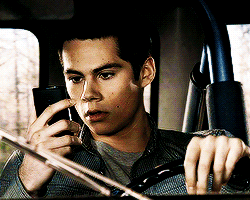12762016
Unit 4.1 Diversity of life
Description
No tags specified
Flashcards by hadil musawi, updated more than 1 year ago
More
Less

|
Created by hadil musawi
almost 8 years ago
|
|
Resource summary
| Question | Answer |
| Q: Define Species | A: a species is the smallest unit of biological classification & a group of similar individuals that interbreed to produce fertile offspring under natural condition. |
| Q: Define hybrids, hybridise & hybridisation | A: hybrids is an offspring of different species. hybridise is when 2 different species interbreed & hybridisation is the process of creating hybrids. |
| Q: Why is it that individuals of different species cannot interbreed to produce fertile offspring? | A: This is because of genetic incompatibility. species are genetically incompatible because of important differences in their DNA or chromosome structure & number. |
| Q: What are problems hybrids usually have? | A: They often have health problems or are infertile. |
| Q: Define hybrid vigour | A: the tendency of a cross-bred individual to show qualities superior to those of both parents. |
| Q: Give an example of hybridisation. | A: a cross between a male lion and a female tiger to produce a 'liger' & a horse between a donkey but their offspring are usually infertile. |
| Q: Define taxonomy. | A: the science of classifying organisims such as biological. |
| Q: Why is understanding & grouping organisms important? | A: it is important for agriculture, medicine & even survival. |
| Q: What were the 2 basic groups Aristotle classified, What did he recognize and what were the terms he first used? | A: The 2 basic groups are plants & animals. He recognized that some animals have a back bone & others didn't. He was the first to use the terms invertebrate and vertebrate. |
| Q: What is the difference between vertebrate and invertebrate? | A: animals with a backbone are called vertebrates and animals without a backbone are called invertebrates. |
| Q: Define Linnaean classification | A: a hierarchical system of classifying organisms, aimed at reflecting their evolutionary relationships. |
| Q: Define morphology | A: the physical form or structure of an organism. |
| Q: Define evolution & who was the first scientist to use the word? | A: Evolution is the change in the characteristics of a species over many generations. The first scientist to use it was Charles Lyell. |
| Q: The geological time scale had been developed and divided into 3 pairs, name them. | A: Paleozoic, Mesozoic & Cenozoic. |
| Q: Define generation. | A: The time between the birth of an individual & when that individual produces their own offspring. |
| Q: What does it mean when species become more or less complex? | A: whether a species become more or less complex, It depends on the characteristics the species need in order to survive in its environment. |
| Q: Who was Charles Darwin and what led him to believe that species could change? | A: He was an English biologist and while writing his book 'The voyage of the beagle' he began to wonder whether a species could change and collected specimens as he wrote. |
| Q: Who was Alfred Russel Wallace & how did he find out the contribution to the understanding of evolution & biogeoraphy. | A: He was an English biologist. He collected & studied over 126000 specimens, several thousand were new to science. |
| Q: Define artificial selection. | A: The process by which we choose to breed particular organisms with desirable features. artificial selection only happens over generations. |
| Q: What is cross-breeding & inbreeding? | A: cross- breeding is selective by combining in the offspring a desirable feature of one individual with a different desirable in another individual. Inbreeding is selective breeding between 2 closely related individuals. |
Want to create your own Flashcards for free with GoConqr? Learn more.
